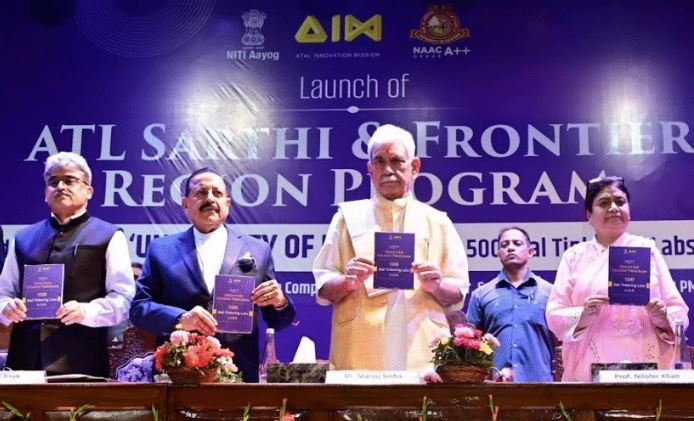India’s journey towards becoming a global innovation powerhouse is being shaped not just in research labs and industries but also in classrooms, where the seeds of creativity and problem-solving are sown. The launch of ATL Sarthi marks a significant milestone in this transformative journey, acting as a catalyst for reimagining school-level innovation ecosystems and nurturing future-ready skills among students. Designed to connect Atal Tinkering Labs (ATLs) with a broader framework of mentorship, capacity building, and institutional collaboration, ATL Sarthi represents a decisive shift in how innovation is fostered, guided, and scaled at the foundational level of education.
Atal Tinkering Labs, envisioned under the Atal Innovation Mission, have already made a profound impact by turning schools into vibrant spaces of exploration and experimentation. They provide young minds with hands-on experience in emerging technologies, robotics, electronics, and design thinking, thereby bridging the gap between theoretical learning and practical application. With ATL Sarthi, these labs are poised to evolve from isolated innovation spaces into nodes within a dynamic, interconnected ecosystem. The initiative’s emphasis on mentorship, teacher training, and guidance will help refine raw talent into structured innovation, equipping students not only with technical skills but also with critical thinking, collaboration, and entrepreneurial abilities, essential attributes for navigating a rapidly changing world. The Frontier Region Programme, which envisions the establishment of 500 additional ATLs in Jammu and Kashmir at a cost of ₹100 crore, is a particularly significant step toward bridging regional and social disparities in access to innovation infrastructure. By extending these opportunities to remote, tribal, and underserved areas, the initiative ensures that innovation is not confined to urban centers but becomes a truly inclusive process. This democratization of innovation will empower students from all backgrounds to engage in scientific inquiry, explore local challenges, and design context-specific solutions that directly benefit their communities. The transformative potential of ATL Sarthi extends beyond classroom walls. By fostering collaboration between schools, universities, and national institutions like NITI Aayog, the programme lays the foundation for a seamless continuum from education to research and entrepreneurship. This collaborative model encourages cross-pollination of ideas, resources, and expertise, creating a pipeline of talent that can contribute meaningfully to India’s innovation landscape. Universities, in particular, play a crucial role as nodal centres that guide and mentor ATLs, support teachers, and help students translate ideas into prototypes and eventually into scalable products or services. Such initiatives hold immense promise for advancing inclusive development in Jammu and Kashmir. The region’s unique socio-economic landscape offers fertile ground for innovation in sectors like agriculture, handicrafts, tourism, and disaster management. School-level innovation platforms can enable students to design solutions tailored to local needs, from developing tools for improving crop yields and preserving traditional crafts to creating digital platforms for promoting tourism or devising early warning systems for natural disasters. These locally rooted innovations not only address pressing challenges but also stimulate economic growth and resilience within communities. A key strength of the ATL model is its ability to cultivate curiosity and creativity at an early age, qualities that form the bedrock of a knowledge-driven society. As India aspires to lead in fields such as artificial intelligence, quantum computing, and climate technology, nurturing an “Amrit Generation” that can think critically, innovate boldly, and act ethically becomes imperative. ATL Sarthi supports this vision by creating an environment where students are encouraged to question, explore, experiment, and fail without fear, ultimately learning to convert their ideas into impactful solutions. Ultimately, ATL Sarthi is about more than building labs or teaching coding; it is about transforming how young people perceive and engage with the world around them. By linking education, research, and entrepreneurship, it turns classrooms into incubators of ideas and students into problem solvers, innovators, and future leaders. As these school-based innovation platforms mature, their cumulative impact will extend far beyond academic achievements, shaping socio-economic growth, driving technological advancement, and contributing to India’s vision of becoming a self-reliant, knowledge-based economy.
The path to an innovative India runs through its schools. ATL Sarthi illuminates this path by creating a robust support structure that empowers students to dream, discover, and design the future. In doing so, it ensures that the next generation of innovators is not just prepared to participate in the global knowledge economy but poised to lead it.




